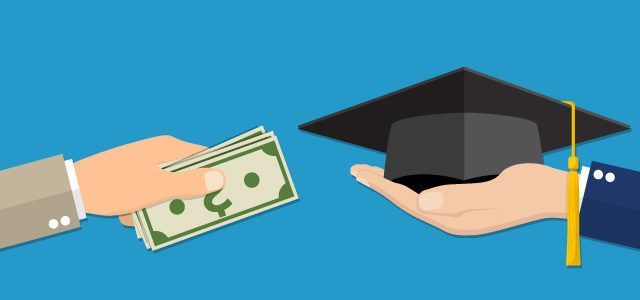Are you struggling to pay off your student loans? You’re not alone. According to the Federal Reserve, Americans owe over $1.5 trillion in student loan debt. That’s a lot of money! However, there is hope – student loan forgiveness programs can help alleviate some of that burden. In this blog post, we’ll explore the different types of student loan forgiveness programs available, who qualifies for them, how they work, and their pros and cons. So let’s dive in and see if these programs could be the solution you’ve been looking for!
What are the Different Types of Student Loan Forgiveness Programs?
There are several different types of student loan forgiveness programs available, each with its own set of requirements and criteria. Here are some of the most common types:
- Public Service Loan Forgiveness (PSLF): This program is designed for individuals who work in certain public service jobs, such as government or non-profit organizations. After making 120 qualifying payments on their loans while working full-time in a qualified job, borrowers may be eligible for loan forgiveness.
- Teacher Loan Forgiveness: Teachers who work in low-income schools or educational service agencies may qualify for up to $17,500 in loan forgiveness after teaching for five consecutive years.
- Perkins Loan Cancellation: Borrowers with Federal Perkins Loans may have their loans canceled if they work in certain public service jobs or occupations that provide specific services such as nursing or law enforcement.
- Income-Driven Repayment Plans: These repayment plans allow borrowers to make monthly payments based on their income and family size and can lead to loan forgiveness after 20-25 years of consistent payment.
Remember that these programs have specific eligibility requirements and not everyone will qualify for each program – it’s important to do your research and find the right options that fit your unique situation!
Who Qualifies for Student Loan Forgiveness?
Student loan forgiveness programs are designed to help students who have taken loans for students pay off their debt. These programs are available to various groups of people, and the eligibility criteria can vary depending on the program.
One type of student loan forgiveness program is the Public Service Loan Forgiveness Program. This program forgives federal student loans for those who work in public service jobs such as government or non-profit organizations, after making 120 qualifying payments.
Another option for forgiveness is through income-driven repayment plans, which allow borrowers to make lower monthly payments based on their income level and family size. After a certain period of time, any remaining balance may be forgiven.
Those who have experienced financial hardship or disability may also be eligible for a loan discharge or forgiveness under specific circumstances. In addition, some states offer their own loan forgiveness programs that target specific professions or areas of study.
It’s important to note that not all types of student loans qualify for these programs, so it’s crucial to research each individual program thoroughly before applying.
How do Student Loan Forgiveness Programs Work?
Student loan forgiveness programs can seem like a complicated process, but they’re actually straightforward once you understand how they work. Generally, student loan forgiveness programs are designed for borrowers who work in certain fields or meet specific criteria.
To qualify for these programs, borrowers must make consistent payments toward their loans over the course of several years. During this time, they may also need to fulfill other requirements such as working in a particular profession or meeting income thresholds.
Once all necessary criteria are met and payments have been made on time, borrowers may be eligible for partial or complete loan forgiveness. This means that some or all of their remaining student debt will be forgiven by the government.
There are several types of student loan forgiveness programs available depending on your career path and personal circumstances. For example, teachers may qualify for the Teacher Loan Forgiveness Program while public service workers could benefit from Public Service Loan Forgiveness.
It’s important to carefully research your options and consult with a financial professional before pursuing any kind of student loan forgiveness program.
Pros and Cons of Student Loan Forgiveness Programs
Student loan forgiveness programs can be a great option for those struggling with student debt, but they do come with their own set of pros and cons.
One major pro is obviously the fact that your loans may be forgiven or reduced, which can provide significant financial relief. This could free up money for other expenses like savings, housing costs, or even travel.
Another positive aspect of these programs is that they offer flexibility in terms of repayment options. Depending on the program you choose, you may have more time to pay off your loans or lower monthly payments.
However, it’s important to consider the potential downsides as well. For example, some programs require participants to work in certain fields or locations for a specified period of time. This can limit job opportunities and geographic mobility.
Additionally, some forgiveness programs require a long-term commitment which means borrowers would need to stay enrolled in the program for several years before seeing any benefits. And finally, there are also cases where tax implications arise from having debts forgiven – this could result in additional taxes owed at year-end.
In short: while student loan forgiveness programs offer many benefits such as lowered monthly payments and added flexibility when it comes time to repayments; one must always keep an eye out for potential drawbacks too – like mandatory commitments limiting career options!
